Trekking Transcordillera
Transcordillera.
Sorata – Chacapampa.
This classic trail is still among the most popular treks in Bolivia, this trekking -despite its low difficulty- represents a challenge for all hikers.
Half of the trajectory covers for the side East and other one for the side West for the route of the indigenous Aymaras that they have had during generations. From end to end, the sceneries are impressive, every day is different from other and this makes this trip different and interesting.
The stages of this trekking are about 5/6 hours average. In fact, a good physical condition and a good acclimation are required.
Day 1.- La Paz – Sorata (2800 m).
Depart in the morning from La Paz by private vehicle toward the village of Sorata that is at the base of the Illampu Mountain, at 2800 m. (4 hours of journey). Arrive in Sorata -transfer to the hotel – walk in the village and the vicinity.
Day 2.- Sorata – Lakathya (4000 m).
We initiate our trip from Sorata, climbing for a footpath perfectly planned up to coming to the population of Latayia, where we establish our camp.
Day 3.- Lakathya – Ancohoma (3700 m).
We continue our trekking that happens across a pass of 4700m, from this point we have a beautiful scenery of the mountain of the Illampu. Then we initiate the descent up to the population of Ancohuma («white waters» in Aymara) where we establish our camp.
Day 4 .- Ancohoma – Cocooyo (3600 m).
From Ancohoma we ascend to the Korhuasani pass (4400 m) and then we descend into the Korhuasani valley to reach our campsite in Cocooyo.
Day 5.- Cocooyo – Chajolpaya (4300 m).
After leaving Cocooyo we ascend to the Sarani pass (4500 m) –from this pass we can see the Chearoco Mountain – then we go downhill until Chajolpaya where we set the camp for this night.
Day 6.- Chajolpaya – Huari Khota (4350 m).
On this day we move across the step Huari Khota (4950 m) and then to lower Huari Khota placed in the shore of the river of the mountain, opposite to our camp we have the mountains of the Group Negruni.
Day 7.- Negruni – Palca – Putu Putuni.
We descend up to Palca, then to rise towards Putu Putuni (4430 m). At the distance we can appreciate the East Face of the mountain of the Chachacomani.
Day 8.- Putu Putuni – Jancko Lacaya (4.600 m).
We see here during the day all the massive Chachacomani. After the passage cross Huaraco (4880 masl) and continue with a descent to the valley. Lunch at the edge of the Laguna Pata Khota. We descend towards the village of Hankolakaya (4200 m).
Day 9.- Jancko Lacaya – Khotia (4400 m.).
After crossing the pass Amahuaya crossed the west side of the Cordillera Real. We descend into the Hicchukhota valley , this time we set the camp next to the Kotia lagoon.
Day 10.- Khotia – Laguna Ajuani (4750 m).
Today we traverse a 4700 m pass, the path surrounds the Chacapa Mountain, from there we can see former gold mines, arriving to Ajuani.
Day 11.- Laguna Ajuani – Juri Khota (4.600 m).
Today we have to trek over two passes( 4900 m and 4950 m respectively). That allows us to observe the impressive “Huayna Potosí”, and to descend to a place for an ideal camping site, in the lagoon Juri khota 4600 m.
Day 12 .- Juri Khota – Paso Austria – Chiar Khota (4.635 m).
From this splendid lake we continue toward the north end of the same one, we go by morrenas that are observed by the whole right end, to reach a rocky observatory point, with impressive views of Left’s wing picks, and the Head of the Snowy Colossus Condoriri. We pass besides Pico Austria, and from this point, we descend to the lake ChiarKhota, arriving until the camp bases of the lagoon Tuni Condoriri at 4600m.
Day 13.- Chiar Khota – Chacapampa.
We cross two successive passes (Jallayko el. 5025 m), Jistaña ( 4930 m.) before undertaking the long descent that will take us to Laguna Liviñosa (el. 4270 m.a.s.l.). From there we will see the imposing Huayna Potosí (el. 6088 m.), dominating the valley.
Day 14 .- Chacapampa – La Paz.
We continue our descent into deeper and narrower valleys. The vegetation becomes denser and the air warmer. We finally arrive to the village of Botijlaca (3600 m) and its temperate climate. After lunch, return a La Paz.

